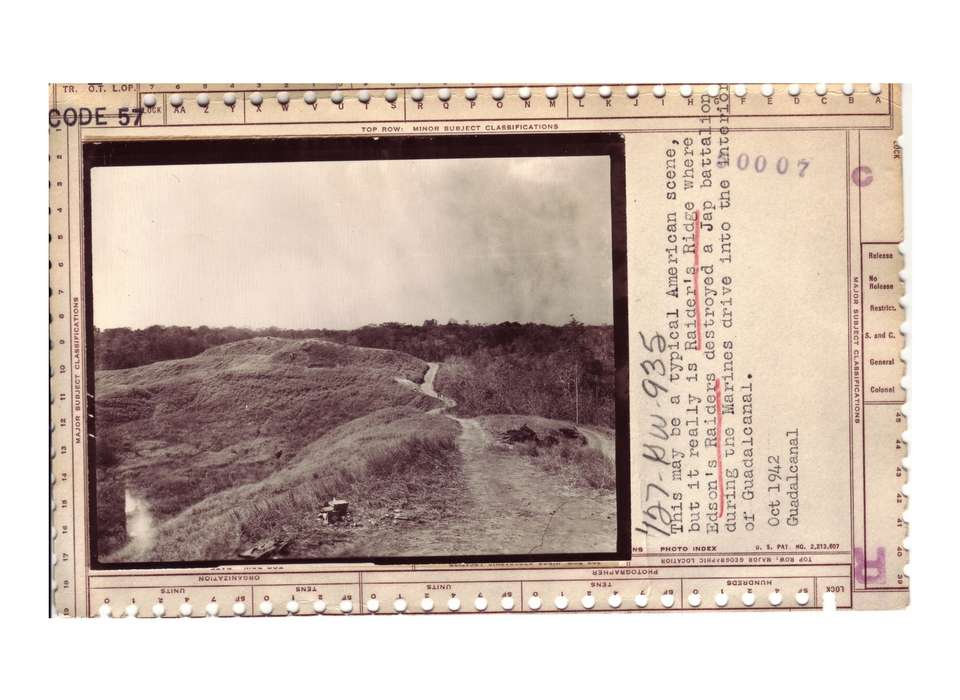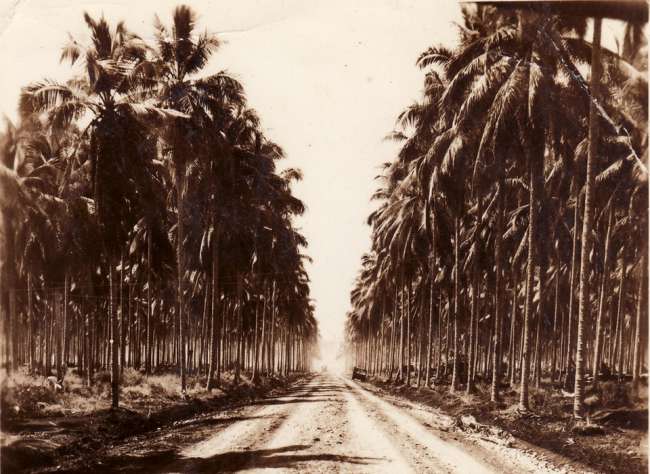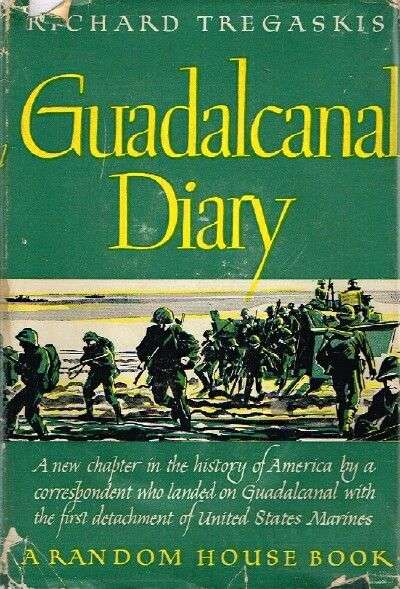The Guadalcanal campaign was unlike any other campaign in the Pacific theater from 1942 onward. It was the only campaign that was a protracted seesaw battle, with one side or the other in control seemingly every month, or even every week, on the seas, in the air, and ashore. Guadalcanal was the only campaign in the Pacific that saw the United States in real danger of actually losing. There was apprehension in those first couple of months, among those in command, as to whether or not Marine General Archer Vandegrift’s “raggedy-assed Marines” could withstand the seemingly endless Japanese attempts to push them off their precarious toehold on the island.
The ground campaign ashore was a learning experience for the Americans. Supplies—or lack thereof—were a constant topic of conversation. As Marine Sid Phillips put it, “We were short on food, short on medicine, short on ammunition, short on everything . . . except Japs. We had plenty of those.” Following the defeat at Savo, the Navy pulled the Marine transports, laden with their supplies, away from the island. The Marines fended for themselves, eating worm- and maggot-riddled Japanese rice, drinking Japanese beer and sake, and living off what meager rations were supplied to them by their own forces.
Though lacking food, clean water and basic supplies, the Marine riflemen in the field never lacked the confidence that was deficient in some senior commanders. Despite having never met the enemy before, having never fired a shot in anger, the young men ashore wearing Marine green dungarees never doubted their ability to beat the enemy. The first enemy thrust against the Marines ended in a sound defeat at the Tenaru on August 21. Marine casualties were relatively light, 115, compared with those of the Japanese, over 700.
While the Tenaru proved that the Marines could defeat the Japanese in a one-on-one battle, it taught them valuable lessons about how to fight their enemy and what to expect; lessons that carried through the remainder of the Pacific war. One lesson in particular was that of Japanese fanaticism. After the Marines assumed the Tenaru engagement to be over, they began to walk among the dead, examining their enemy and capturing souvenirs while Navy corpsmen attempted to help wounded enemy soldiers who were still alive. Assuming their enemy wanted medical treatment, the corpsmen and Marines were astonished when more than one enemy soldier feigned death or wounds in order to draw the Americans close to them so that they might take one more American with them before they were killed. This was shocking to the young Americans. An enemy who would rather die than be saved? An enemy who would kill someone who was trying to save them? The Marines provided their response to their enemy’s treachery swiftly that morning on the Tenaru. Body after body, dead or not, was provided with an extra bullet to the head, to ensure their end and provide safety for the surviving Marines. The Tenaru introduced the Marines to the Japanese way of fighting: that of savagery and treachery, a fight to the death—always. No quarter asked, no quarter given.
As August gave way to September, the ground campaign ashore seemed to stagnate. The Japanese were fully aware that the key to the Marines’ longevity on Guadalcanal rested on who controlled Henderson Field. The center of operations on the island, Henderson was the heart pumping supplies and support to the Marines defending the perimeter. If the Japanese captured Henderson, there was no doubt the Marines would lose hold of Guadalcanal and be defeated. Not only were the Japanese cognizant of this fact—so was General Vandegrift, in charge of the defense and occupation of the island. Vandegrift stretched his meager defenses all around the airstrip, doing whatever he could to reinforce the positions, specifically a small ridge, only a mile south of the airfield.
The daily Japanese air raid that occurred on September 11 did little to raise the attention of the Marines of the 1st Raider Battalion under the command of Merritt Edson, or Paramarines digging foxholes along the ridge and at its bottom, until bombs started dropping on the ridge itself instead of the usual target, the airfield. It became clear to the Marines that the raid wasn’t simply an off-target drop. The precision and intensity of the raid told those on the ridge that their new home would more than likely be the focus of a Japanese assault very soon. Vandegrift and Edson poured men along the ridge. By the evening of September 12, some 840 Marines defended the perimeter around the ridge, and the ridge itself. However, the numbers were misleading. The area the Marines defended was spread out. The thick jungle and the multiple positions the Marines defended did not allow for a continuous line of defense anywhere except the top of the ridge. If the Japanese got that far, it would be almost too little, too late, as there were few defenses between the top of the ridge and the Japanese goal, the airfield.
The relative stillness of the early evening of September 12 was broken by the screaming of incoming Japanese naval shells, directed straight at the Marines on the ridge. Thankfully, the incoming fire was inaccurate, and the Marine defenses remained intact, but the shelling made it very clear that an attack was imminent. That attack came later that night as small bands of Japanese assault units tangled with Raiders and Paramarines dug in along the ridge’s bottom and the surrounding jungle. The Japanese assault force was extremely strong, but due to the thick jungle surrounding the ridge, some units became disoriented, with some units getting lost completely and not being able to participate in the attack. Despite not having a cohesive unit, the Japanese attacked anyway and were defeated by the Marines in heavy fighting. The Japanese units, under the command of General Kiyotake Kawaguchi, regrouped in the jungle and planned for another assault to take place the following night.
At 1830 on the night of September 13, the first Japanese attacks fell upon the defending Marines. The small parcels of Marines at the bottom of the ridge and in the jungle were overrun and forced to pull back to the ridge. Marine artillery and mortars poured fire toward the Japanese attackers as they began to roll up the ridge like an approaching flood. The heavy artillery fire and tremendous volume of machine-gun fire from the defenders temporarily stopped the Japanese. After the battle, Edson estimated that the units being attacked, B Company 1st Raiders and two companies of the 1st Marine Parachute battalion—some 300 men—faced nearly two full battalions of Japanese.
Following a brief respite, the Japanese assault continued as it forced the Marines to abandon their positions and retreat under heavy enemy fire. Orders were confused and the Marines heard the words “withdraw” and did so, quickly. Marines began to run, panicked and exhausted, away from their enemy, up the ridge towards the crest, the Japanese hot on their heels. The actions of a few officers and men, Major Kenneth Bailey being one, halted the retreat and turned the panicked defenders around to face their sword- and bayonet- wielding enemy as Marine artillery crashed along the lines and directly into the assaulting Japanese. The 11th Marines poured artillery fire along the ridge, dangerously close to Marine lines. Forward artillery observers along the line called back to the artillerymen to, “Drop it five zero and walk it back and forth across the ridge, it’s knocking the hell out of them!” The artillery and defensive machine-gun fire tore huge holes in the assaulting Japanese, yet still they came. The Marines had pulled back their defenses to the top of the ridge, some 300 survivors clustered tightly around the crest listening to their tenacious commanding officer Merritt Edson bark orders for them to hold the line. Hand grenades and machine-gun ammunition rapidly became priceless commodities along the line as the fighting broke out into hand-to-hand. Finally, around 0530 with the Japanese at the outskirts of the fighter strip, the enemy attack was finally stopped. As dawn rose, so did Army Air Forces P-400 Airacobras based on the island, spraying what was left of Kawaguchi’s men with 20mm cannon fire.
Sporadic, sometimes heavy, fighting went on throughout the day, but for all intents and purposes the battle of the ridge was over. Exact casualties for both sides are unknown. Some estimates say that American casualties were upward of 300. Japanese figures vary widely, numbering as low as 500 to as high as 1,200. It’s unlikely that the exact human cost of the battle for the ridge will ever be known.
The ridge, nameless before September 12, would become known to history as Edson’s Ridge in honor of the 1st Raider Battalion’s fearless commanding officer. The Marine victory at Edson’s Ridge allowed the toehold on Guadalcanal to remain active and successful. American reinforcements arrived at the end of September, and still more would come in October. While the Japanese offensive had been stopped at Edson’s Ridge, the enemy’s offensive actions were only temporarily halted. October saw more vicious Japanese thrusts and more nail-biting infantry combat. The Japanese continued to push hard to take the airfield, yet they never got as close to victory as they had the night of the attack on Edson’s Ridge. The Japanese thought that the recapture of Guadalcanal would be easy, a simple task—that the experienced Japanese would swipe Guadalcanal away from the green, unproven American Marines. Much to their chagrin, however, the campaign on Guadalcanal had turned into a slugfest, a meat grinder, a battle of attrition.
A battle of attrition was one that the Japanese could not win. American industrial power was ramping up, and through the victory at Edson’s Ridge and some success at sea, the United States was now more committed than ever to see the campaign on Guadalcanal through to ultimate victory.
Seth Paridon
Seth Paridon was a staff historian at The National WWII Museum from 2005 to 2020. He began his career conducting oral histories and research for HBO’s miniseries The Pacific and holds the distinction of being the first historian hired by the Museum’s Research Department. In the 12 years he was Manager of Research Services, Seth and his team increased the oral history collection from 25 to nearly 5,000 oral histories.
Cite this article:
MLA Citation:
APA Citation:
Chicago Style Citation:











